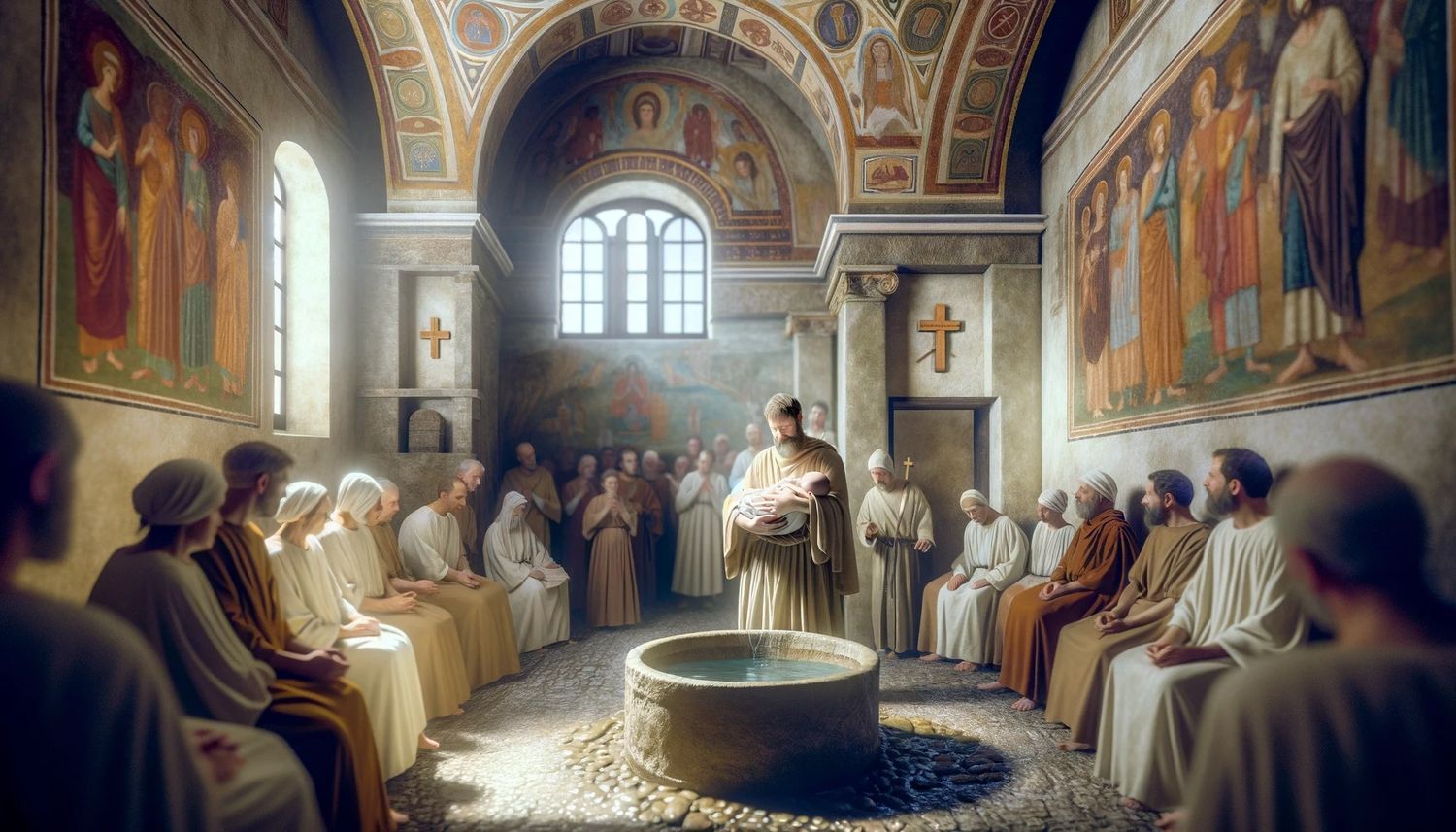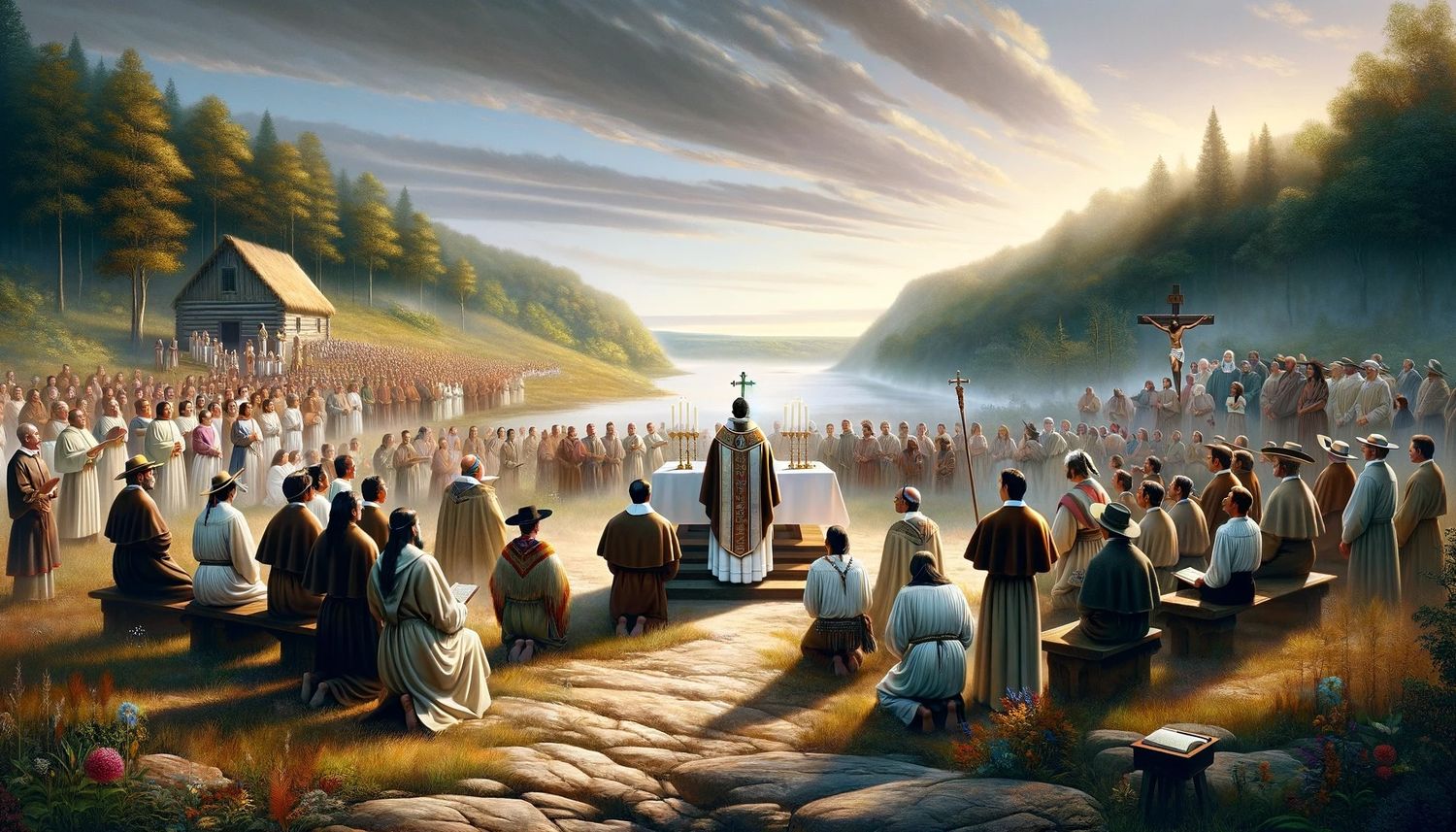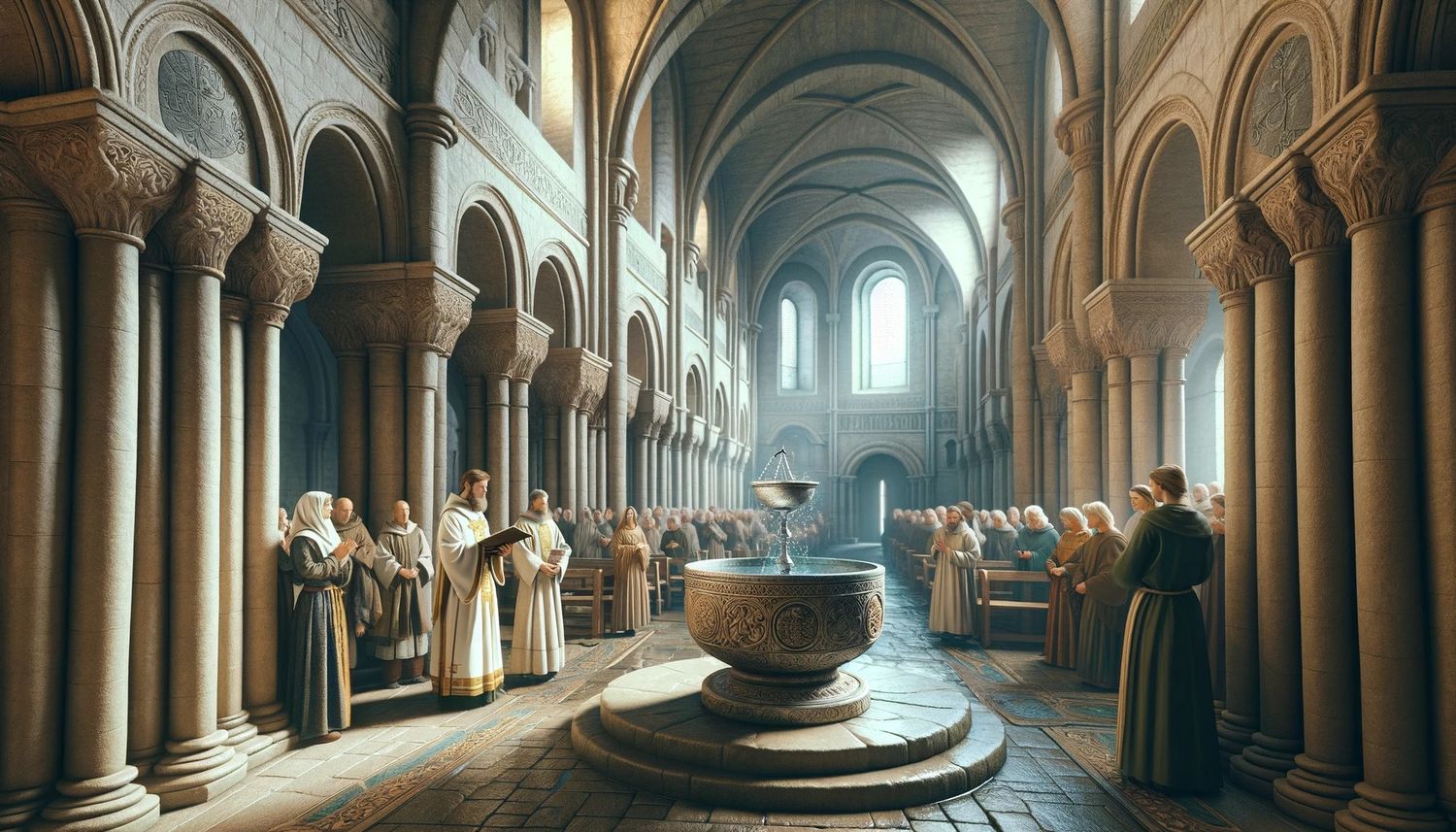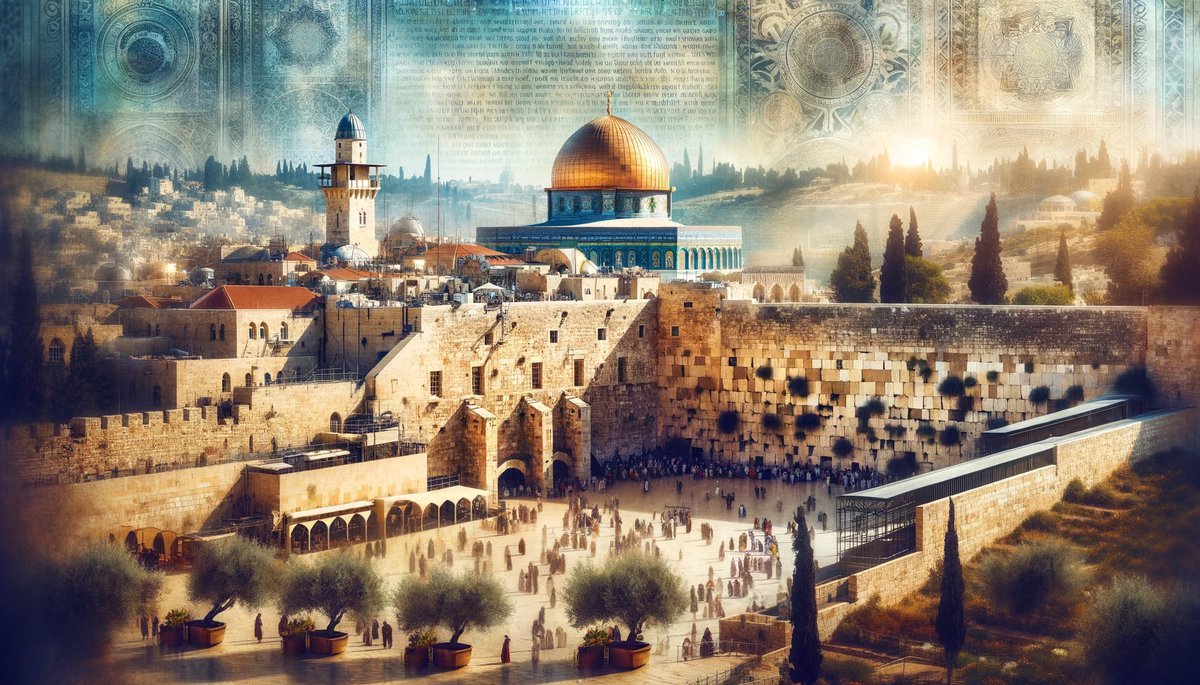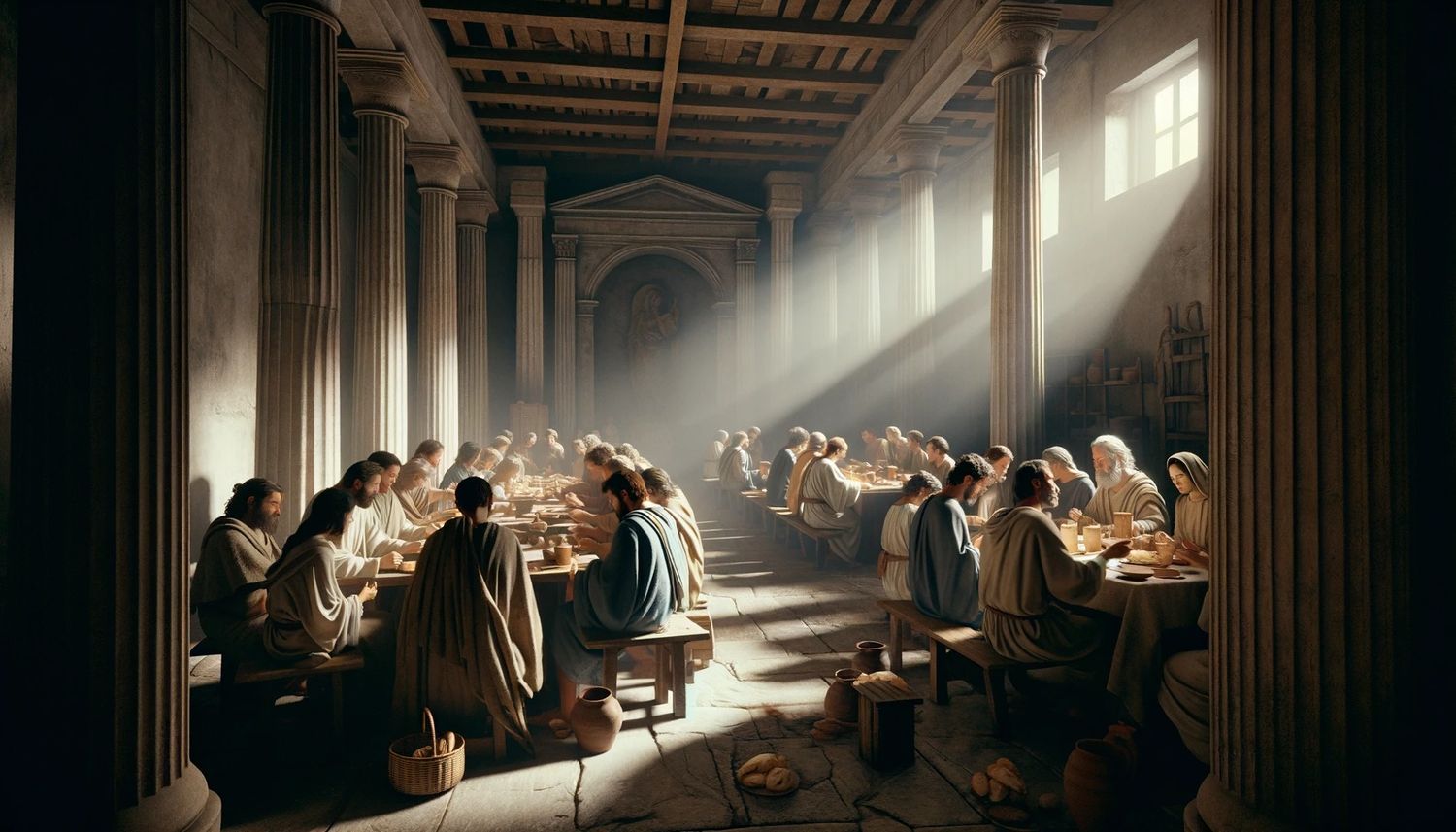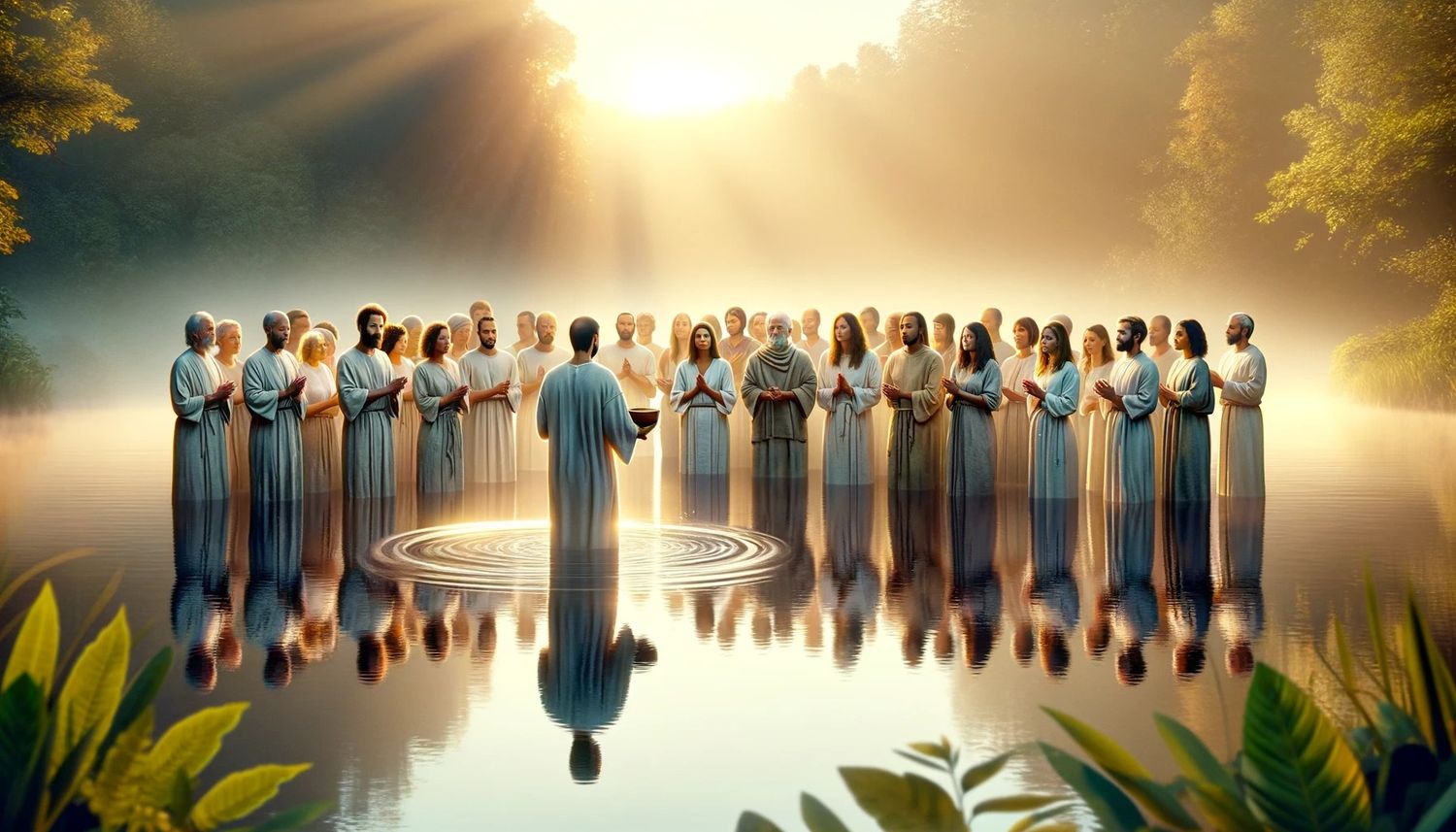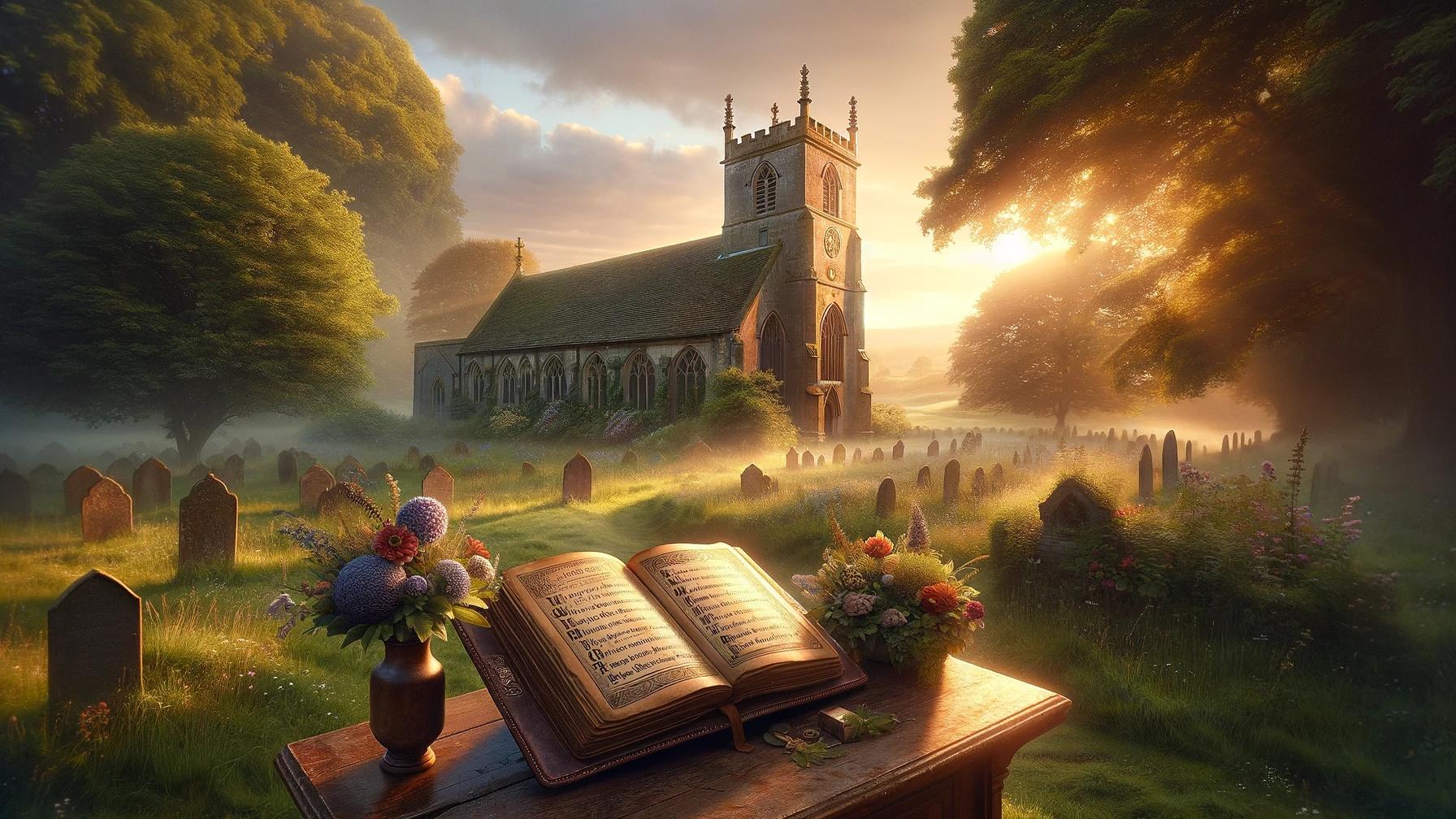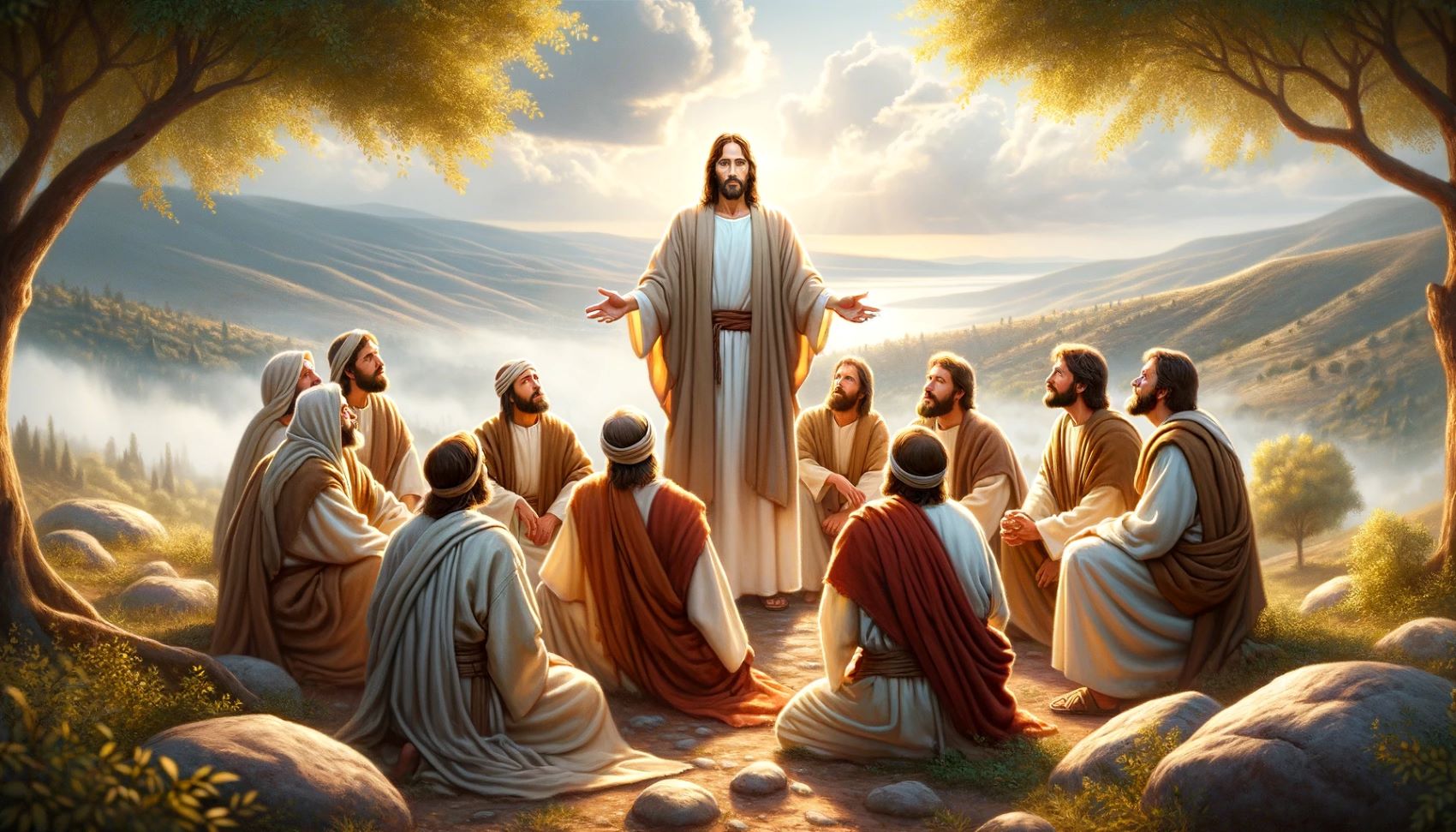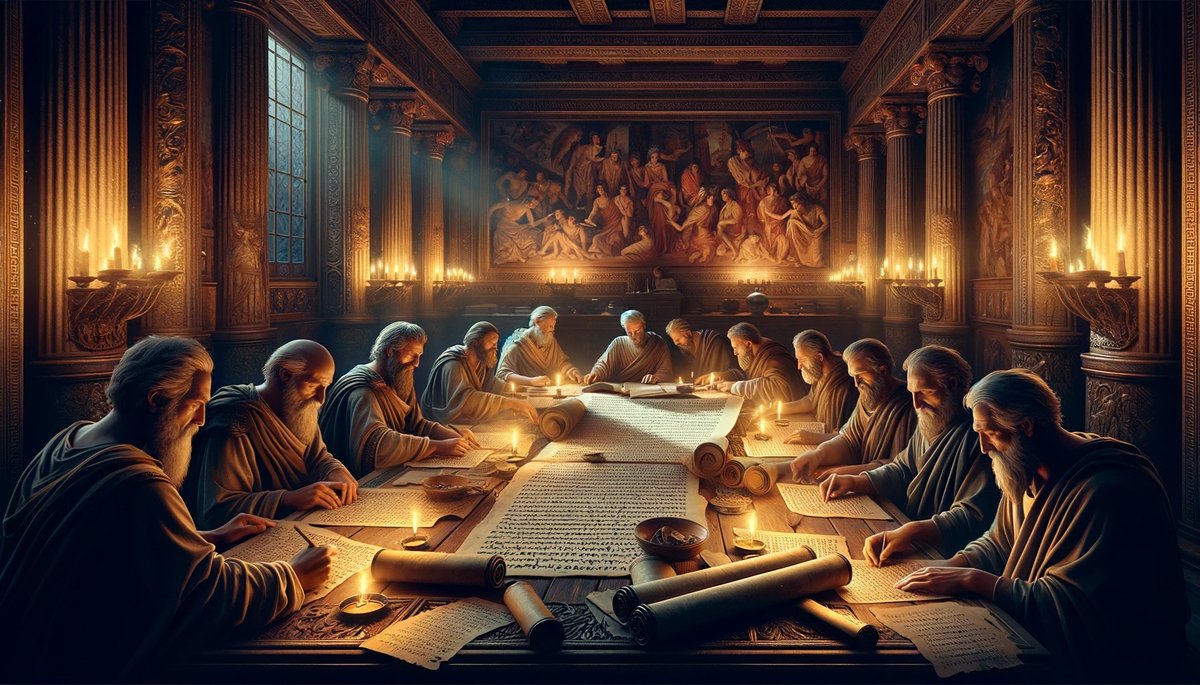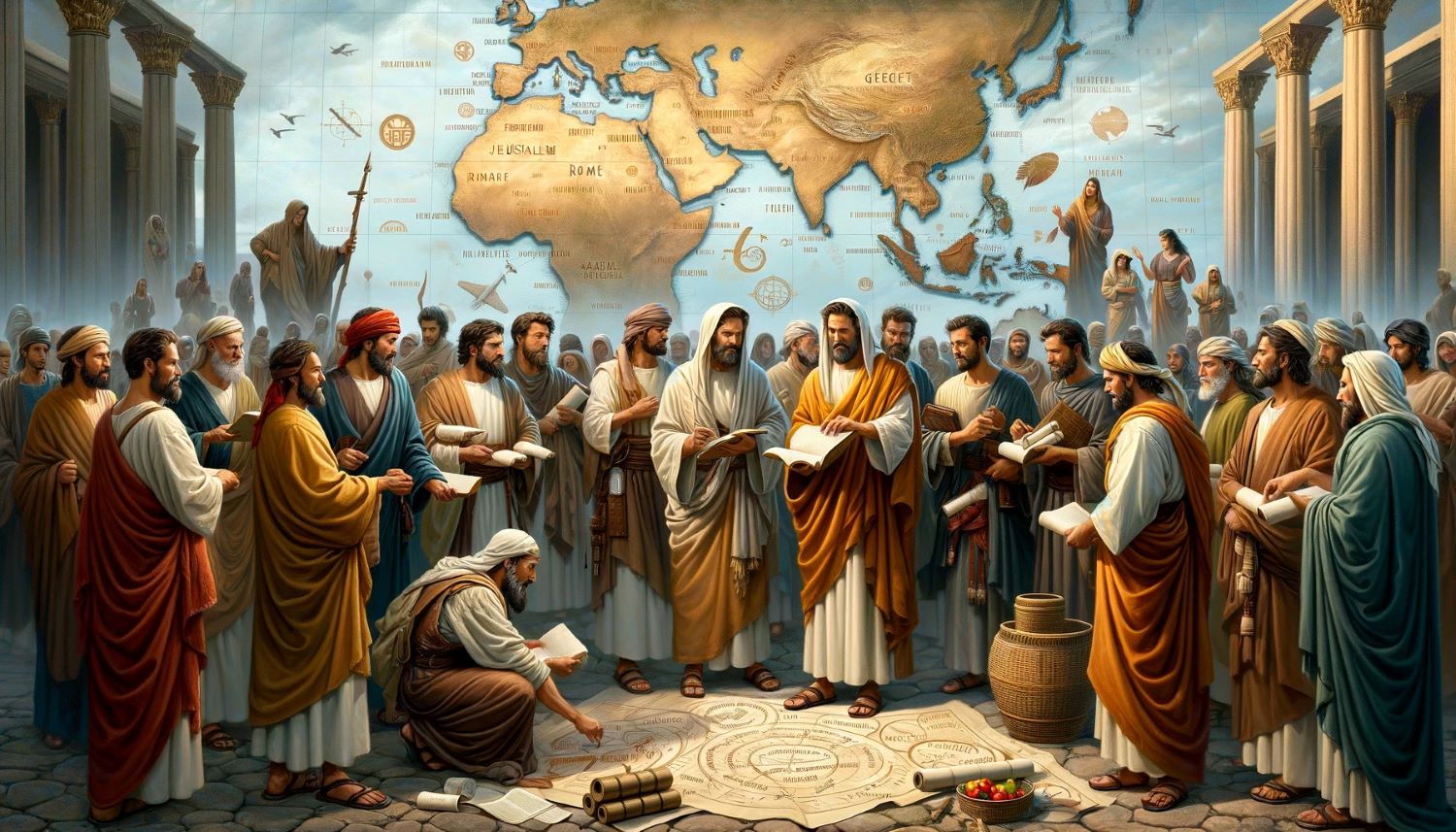Home>Arts and Culture>Where And When Did Hymns Begin


Arts and Culture
Where And When Did Hymns Begin
Published: March 7, 2024
Jason DeRose, Managing Editor at Christian.net, uses his expertise in religion and journalism to deepen understanding of faith's societal impacts. His editorial leadership, coupled with a strong academic background, enriches the platform’s diverse content, earning him recognition in both journalism and religious circles.
Discover the origins of hymns and their historical significance in the arts and culture. Uncover the beginnings of hymnody and its impact on music and society.
(Many of the links in this article redirect to a specific reviewed product. Your purchase of these products through affiliate links helps to generate commission for Christian.net, at no extra cost. Learn more)
Table of Contents
The Origins of Hymns
Hymns have been an integral part of religious worship for centuries, but where and when did they actually begin? The origins of hymns can be traced back to ancient civilizations, where people used songs and chants to honor their deities and express their spiritual beliefs. These early hymns were often accompanied by simple musical instruments and were an essential part of religious rituals and ceremonies.
The concept of hymnody, or the singing of hymns, can be found in various religious traditions across the world. From the Vedic hymns of ancient India to the Psalms of the Hebrew Bible, people have been using music and poetry to express their devotion to the divine for millennia. The earliest hymns were likely composed and passed down orally, eventually being transcribed and preserved in religious texts.
As societies evolved, so did the art of hymnody. Different cultures developed their own unique styles and forms of hymns, reflecting their distinct religious beliefs and practices. The early hymns were often simple and repetitive, making it easier for people to remember and participate in communal singing during religious gatherings.
The origins of hymns are deeply intertwined with the human experience of spirituality and the desire to connect with the divine. Whether through the rhythmic chants of ancient civilizations or the elaborate choral compositions of the medieval era, hymns have served as a powerful means of expressing faith and reverence throughout history.
Read more: When And How Did Lent Begin
Early Forms of Hymnody
-
Ancient Chants and Songs: The early forms of hymnody can be traced back to ancient civilizations, where people used chants and songs to honor their deities and express their spiritual beliefs. These early hymns were often simple and repetitive, making them easy for communal singing during religious rituals and ceremonies.
-
Oral Tradition: Before the advent of written language, hymns were passed down orally from one generation to the next. The transmission of hymns through oral tradition allowed for the preservation and propagation of religious teachings and beliefs.
-
Musical Accompaniment: Early hymns were often accompanied by simple musical instruments such as flutes, lyres, and drums. The combination of music and poetry created a powerful and emotive form of worship, allowing individuals to express their devotion to the divine in a tangible and communal way.
-
Cultural Diversity: Different cultures developed their own unique styles and forms of hymnody, reflecting their distinct religious beliefs and practices. From the rhythmic chants of ancient India to the melodic Psalms of the Hebrew Bible, early hymns were deeply rooted in the cultural and spiritual traditions of their respective societies.
-
Role in Religious Rituals: Early hymns played a central role in religious rituals and ceremonies, serving as a means of invoking divine presence, expressing gratitude, seeking protection, and seeking guidance. The repetitive and rhythmic nature of these hymns created a sense of unity and collective devotion among the worshippers.
-
Evolution of Hymnody: Over time, the art of hymnody evolved as societies developed more sophisticated musical and poetic forms. The early forms of hymnody laid the foundation for the rich and diverse tradition of sacred music that continues to thrive in religious communities around the world.
Hymns in Ancient Civilizations
-
Vedic Hymns of India: The ancient Indian civilization, known for its rich spiritual heritage, produced a vast collection of hymns known as the Vedas. These hymns, composed in the sacred language of Sanskrit, were chanted during religious rituals and ceremonies as a way of honoring the deities and seeking divine blessings. The Rigveda, one of the oldest sacred texts in the world, contains a treasure trove of hymns that provide insights into the religious beliefs and practices of ancient Indian society.
-
Psalms of the Hebrew Bible: The Hebrew Bible, or the Old Testament, contains a collection of poetic hymns known as the Psalms. These hymns, attributed to King David and other ancient poets, express a wide range of emotions and themes, including praise, thanksgiving, lament, and supplication. The Psalms were an integral part of Jewish worship and continue to be recited and sung in both Jewish and Christian traditions.
-
Greek and Roman Hymns: The ancient Greeks and Romans also had a rich tradition of hymnody, with hymns dedicated to various gods and goddesses. The Homeric Hymns, attributed to the poet Homer, are a collection of ancient Greek hymns that celebrate the deeds and attributes of the Olympian deities. Similarly, the Roman poet Ovid composed hymns to honor the Roman gods, reflecting the religious practices of the ancient Roman civilization.
-
Egyptian Hymns: The ancient Egyptian civilization also had a vibrant tradition of hymnody, with hymns dedicated to the sun god Ra, the goddess Isis, and other deities. These hymns, found inscribed on temple walls and papyrus scrolls, were an essential part of Egyptian religious rituals and were believed to have magical and protective powers.
-
Chinese and Mesopotamian Hymns: In ancient China and Mesopotamia, hymns were used as a means of honoring the ancestors and seeking divine favor. The Book of Songs, a collection of ancient Chinese poetry, contains hymns that reflect the spiritual and cultural life of the early Chinese civilization. Similarly, the Sumerians and Babylonians of Mesopotamia composed hymns to express their reverence for the gods and goddesses of their pantheon.
-
Universal Themes: Despite the diversity of ancient civilizations, the hymns composed by these cultures often shared universal themes of devotion, gratitude, supplication, and awe in the presence of the divine. The ancient hymns served as a bridge between the earthly and the divine, allowing individuals to express their spiritual aspirations and connect with the transcendent realm.
The Development of Christian Hymnody
-
Early Christian Hymns: The early Christian church inherited the tradition of hymnody from its Jewish roots, incorporating the Psalms and other sacred songs into its worship. As Christianity spread throughout the Roman Empire, new hymns began to emerge, reflecting the teachings and beliefs of the faith. These early Christian hymns were often sung in private gatherings and during religious ceremonies, serving as a means of expressing devotion to Christ and proclaiming the message of the Gospel.
-
Ambrose and the Latin Hymnody: One of the most influential figures in the development of Christian hymnody was Ambrose, the Bishop of Milan. Ambrose is credited with introducing the use of hymns in public worship and is considered the author of several hymns, including the famous "Te Deum Laudamus." His contributions to Latin hymnody laid the foundation for the rich tradition of hymnody in the Western Christian Church.
-
Gregorian Chant and Plainsong: The medieval period witnessed the rise of Gregorian chant, a form of monophonic, unaccompanied sacred song that became synonymous with Christian worship. Gregorian chant, also known as plainsong, was characterized by its simple, flowing melodies and was sung in Latin as part of the liturgical rites of the Roman Catholic Church. The melodies of Gregorian chant were passed down orally and eventually notated, preserving this ancient form of Christian hymnody for future generations.
-
Reformation and Protestant Hymnody: The Protestant Reformation of the 16th century brought about significant changes in Christian hymnody. Reformers such as Martin Luther emphasized congregational singing and sought to make the hymns more accessible to the laity. Luther himself composed numerous hymns, including the iconic "A Mighty Fortress Is Our God," which became a rallying cry for the Reformation movement. The Reformation also saw the rise of hymnals and the widespread use of hymns in Protestant worship services.
-
Wesleyan Hymnody and Revivalism: The 18th century witnessed a revival of hymnody within the Methodist movement, led by figures such as John and Charles Wesley. The Wesley brothers wrote thousands of hymns, many of which are still sung in churches today. Their hymns, characterized by their emotive and evangelical nature, played a significant role in the revivalist movements of the era, inspiring congregations to express their faith through music and song.
-
Modern Christian Hymnody: In the modern era, Christian hymnody has continued to evolve, incorporating diverse musical styles and lyrical expressions. Contemporary hymn writers have drawn inspiration from various sources, creating hymns that reflect the cultural and theological diversity of the global Christian community. The enduring legacy of Christian hymnody serves as a testament to the power of music in expressing and nurturing the faith of believers across denominational lines.
Hymns in the Middle Ages
-
Gregorian Chant and Plainsong: The Middle Ages, spanning roughly from the 5th to the 15th century, witnessed the flourishing of Gregorian chant, also known as plainsong. This form of monophonic, unaccompanied sacred song became synonymous with Christian worship during this period. Gregorian chant, named after Pope Gregory I, was characterized by its simple, flowing melodies and was sung in Latin as part of the liturgical rites of the Roman Catholic Church. The melodies of Gregorian chant were passed down orally and eventually notated, preserving this ancient form of Christian hymnody for future generations.
-
Monastic Hymnody: Monasteries played a pivotal role in the preservation and development of hymnody during the Middle Ages. Monks and nuns composed and sang hymns as part of their daily worship and devotional practices. The monastic tradition gave rise to a rich repertoire of hymns, many of which were incorporated into the liturgical life of the Church. Monastic hymnody reflected the contemplative and meditative spirit of the monastic life, offering a means of spiritual expression and devotion within the cloistered walls of the monasteries.
-
Development of Notation: The Middle Ages also saw significant advancements in musical notation, which allowed for the accurate recording and transmission of hymns and chants. The development of neumes, an early form of musical notation, enabled composers and singers to notate the melodies of hymns, ensuring their preservation and dissemination. This innovation marked a crucial milestone in the history of hymnody, laying the groundwork for the codification of musical repertoires and the standardization of liturgical music.
-
Marian Hymnody: The veneration of the Virgin Mary was a prominent feature of medieval Christian piety, leading to the composition of numerous hymns in her honor. Marian hymnody, characterized by its tender and devotional tone, expressed the love and reverence of believers towards the Mother of Christ. Hymns such as the "Salve Regina" and the "Ave Maria" became enduring expressions of Marian devotion, enriching the liturgical and devotional life of the faithful during the Middle Ages.
-
Liturgy and Hymnody: Hymns played a central role in the liturgical celebrations of the medieval Church. From the celebration of the Mass to the observance of the Divine Office, hymns were sung as integral components of the liturgical texts. The poetic and melodic beauty of hymnody enhanced the solemnity and splendor of the liturgical rites, creating a sense of awe and reverence among the worshippers. The Middle Ages thus witnessed the fusion of liturgy and hymnody, shaping the musical and spiritual landscape of medieval Christianity.
Read more: When Did Lent Begin
The Protestant Reformation and Hymnody
The Protestant Reformation of the 16th century brought about significant changes in Christian hymnody. Reformers such as Martin Luther emphasized congregational singing and sought to make the hymns more accessible to the laity. Luther himself composed numerous hymns, including the iconic "A Mighty Fortress Is Our God," which became a rallying cry for the Reformation movement. The Reformation also saw the rise of hymnals and the widespread use of hymns in Protestant worship services.
The Reformation challenged the traditional authority of the Roman Catholic Church and emphasized the priesthood of all believers. As a result, congregational participation in worship became a central tenet of Protestant theology. Martin Luther, a key figure in the Reformation, recognized the power of music in conveying the message of the Gospel and engaging the faithful in worship. He advocated for the use of hymns in the vernacular language, enabling the common people to actively participate in the liturgy through singing.
Luther's hymnody, characterized by its robust and declarative nature, reflected the theological themes of the Reformation, such as justification by faith and the sovereignty of God. His hymns served as a means of teaching and reinforcing the doctrinal principles of the Reformation, making the theological concepts accessible to the ordinary worshippers. The hymn "A Mighty Fortress Is Our God," based on Psalm 46, encapsulated the spirit of confidence and trust in God's protection amidst the tumultuous events of the Reformation era.
The Reformation also witnessed the compilation of hymnals, which contained a collection of hymns for congregational use. These hymnals served as a means of standardizing the repertoire of hymnody within the Protestant tradition, providing a common resource for worship and edification. The widespread dissemination of hymnals facilitated the spread of Protestant hymnody across different regions and contributed to the formation of a distinct musical heritage within each Protestant denomination.
The use of hymns in Protestant worship services became a hallmark of Reformation spirituality, fostering a sense of community and shared identity among the worshippers. Hymn singing provided a means of expressing faith, solidarity, and devotion, uniting the congregation in a collective act of worship. The Reformation's emphasis on the priesthood of all believers empowered the laity to actively engage in the musical and spiritual life of the Church, contributing to the democratization of worship through congregational participation.
The Protestant Reformation thus had a profound impact on the development of hymnody, shaping the musical and theological landscape of Protestant Christianity. The legacy of Reformation hymnody continues to resonate in the hymnals and worship practices of Protestant churches, serving as a testament to the enduring influence of the Reformation movement on Christian music and worship.
Hymnody in the Modern Era
-
Diversity of Musical Styles: In the modern era, Christian hymnody has embraced a wide range of musical styles, reflecting the cultural and artistic diversity of the global Christian community. From traditional hymn tunes to contemporary worship songs, the modern repertoire of hymnody encompasses a rich tapestry of musical expressions. Hymn writers and composers draw inspiration from various genres, including classical, folk, gospel, and contemporary Christian music, creating hymns that resonate with the diverse musical preferences of congregations.
-
Incorporation of Global Influences: With the increasing interconnectedness of the world, modern hymnody has been enriched by the incorporation of global musical influences. Hymn writers from different cultural backgrounds infuse their compositions with elements of their native music, resulting in hymns that reflect the multicultural and multinational nature of the Church. This cross-pollination of musical traditions has contributed to the expansion and enrichment of the contemporary hymnody, fostering a sense of unity and solidarity among believers worldwide.
-
Lyrical and Theological Depth: Modern hymnody continues to uphold the tradition of lyrical and theological depth, offering hymns that convey profound spiritual truths and reflections. Hymn writers delve into a wide array of theological themes, addressing issues of faith, grace, justice, and the human experience. The lyrics of modern hymns serve as vehicles for theological reflection and spiritual contemplation, providing worshippers with meaningful and substantive content for their devotional and communal singing.
-
Integration of Technology: The advent of technology has revolutionized the creation, distribution, and utilization of hymnody in the modern era. Digital platforms and recording technologies have made it easier for hymn writers to share their compositions with a global audience, transcending geographical boundaries. Additionally, the use of multimedia and projection systems in worship spaces has facilitated the incorporation of modern hymnody into congregational singing, enhancing the accessibility and engagement of worshippers with the hymn repertoire.
-
Continued Creativity and Innovation: Contemporary hymnody is marked by a spirit of continued creativity and innovation, as hymn writers and composers explore new musical and lyrical avenues for expressing the Christian faith. The evolving nature of hymnody reflects the dynamic and living tradition of Christian worship, adapting to the changing cultural and spiritual dynamics of the modern world. This spirit of creativity ensures the vitality and relevance of hymnody in the contemporary worship landscape, catering to the evolving needs and preferences of congregations.
-
Cross-Denominational Collaboration: Modern hymnody has witnessed cross-denominational collaboration among hymn writers, musicians, and worship leaders from diverse Christian traditions. This collaborative spirit has led to the creation of hymns that resonate across denominational boundaries, fostering a sense of unity and ecumenical fellowship through shared musical expressions. The collaborative efforts in modern hymnody reflect the common faith and shared heritage of the Church, transcending theological differences and promoting a spirit of harmony and cooperation in worship.
-
Adaptation to Changing Worship Contexts: As worship practices and contexts evolve in the modern era, hymnody has adapted to meet the needs of contemporary worship settings. Hymn writers and composers have crafted hymns that are suitable for various worship styles, including traditional, blended, and contemporary worship services. The adaptability of modern hymnody ensures its relevance and applicability in diverse worship environments, catering to the preferences and sensibilities of congregations with varying worship traditions.
In summary, hymnody in the modern era embodies a dynamic and inclusive musical tradition that reflects the cultural, technological, and theological developments of contemporary Christianity. The ongoing evolution of hymnody ensures its continued resonance and relevance in the worship life of the Church, offering a diverse and vibrant repertoire of sacred music for the edification and spiritual nourishment of believers.
